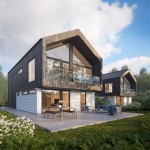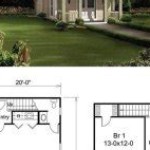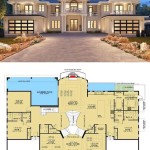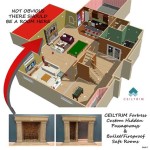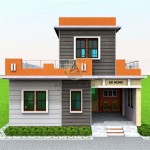A mountain house floor plan is a blueprint that outlines the layout and design of a house built in a mountainous area. These floor plans often incorporate unique features and considerations specific to mountain environments, such as steep slopes, limited access, and stunning views.
Mountain house floor plans are specially designed to take advantage of the natural surroundings. They often feature large windows and decks that provide panoramic views of the mountains and valleys. The layout of the house is typically designed to maximize natural light and ventilation, and to minimize heat loss during the winter months.
In the following sections, we will explore the key elements of mountain house floor plans, discuss the advantages and disadvantages of different layouts, and provide tips for choosing the right floor plan for your mountain home.
When designing a mountain house floor plan, there are several key points to consider:
- Maximize views: Take advantage of the stunning mountain scenery with large windows and decks.
- Natural light and ventilation: Utilize passive solar design to maximize natural light and ventilation.
- Minimize heat loss: Incorporate energy-efficient features such as insulation and thermal windows.
- Steep slopes: Design the house to accommodate the terrain, using retaining walls and terraces if necessary.
- Limited access: Consider the accessibility of the site and provide adequate parking and access roads.
- Outdoor living: Create seamless transitions between indoor and outdoor spaces with decks, patios, and fire pits.
- Storage: Plan for ample storage space for seasonal items, sports equipment, and firewood.
- Multi-level design: Utilize split-level or multi-story designs to maximize space and create interesting visual appeal.
- Customizability: Choose a floor plan that can be easily customized to meet your specific needs and preferences.
By carefully considering these factors, you can create a mountain house floor plan that is both functional and beautiful, and that takes full advantage of the unique mountain environment.
Maximize views: Take advantage of the stunning mountain scenery with large windows and decks.
One of the best things about living in a mountain home is the stunning scenery. Mountain house floor plans often incorporate large windows and decks to take advantage of these views. Large windows allow natural light to flood into the home, creating a bright and airy atmosphere. They also provide panoramic views of the mountains and valleys, making it easy to enjoy the beauty of the surroundings from the comfort of your own home.
Decks are another great way to maximize views from a mountain home. Decks can be used for outdoor dining, entertaining, or simply relaxing and enjoying the scenery. They can be built on multiple levels to take advantage of different views, and can be screened in to protect from insects and the elements. Decks also provide a seamless transition between indoor and outdoor living, making it easy to enjoy the fresh air and mountain views from the comfort of your home.
When designing a mountain house floor plan, it is important to consider the placement of windows and decks to maximize views. Windows should be placed in areas where they will provide the best views, and decks should be designed to take advantage of the best views and provide easy access to the outdoors. By carefully considering the placement of windows and decks, you can create a mountain home that takes full advantage of the stunning mountain scenery.
In addition to windows and decks, there are other ways to maximize views from a mountain home. These include:
- Use skylights: Skylights can be used to bring natural light into a home and provide views of the sky and surrounding mountains.
- Create a sunroom: A sunroom is a room with large windows that provides panoramic views of the outdoors. Sunrooms can be used for relaxing, reading, or entertaining.
- Build a tower: A tower can provide elevated views of the surrounding mountains and valleys.
By incorporating these features into your mountain house floor plan, you can create a home that takes full advantage of the stunning mountain scenery and provides you with a lifetime of enjoyment.
Natural light and ventilation: Utilize passive solar design to maximize natural light and ventilation.
Natural light and ventilation are essential for a healthy and comfortable home. Mountain house floor plans often incorporate passive solar design to maximize natural light and ventilation. Passive solar design is a design approach that uses the sun’s energy to heat and light a home without the use of active mechanical systems.
- Windows and skylights: Windows and skylights are the most common way to bring natural light into a home. When designing a mountain house floor plan, it is important to consider the placement of windows and skylights to maximize natural light. Windows should be placed in areas where they will provide the best views and allow for cross-ventilation. Skylights can be used to bring natural light into dark areas of a home, such as bathrooms and closets.
- Orientation: The orientation of a house can also affect the amount of natural light and ventilation it receives. In the Northern Hemisphere, homes that are oriented to the south will receive the most sunlight. In the Southern Hemisphere, homes that are oriented to the north will receive the most sunlight. When designing a mountain house floor plan, it is important to consider the orientation of the house to maximize natural light and ventilation.
- Thermal mass: Thermal mass is a material that can absorb and store heat. When used in a home, thermal mass can help to regulate the temperature of the home, keeping it cool in the summer and warm in the winter. Thermal mass can be used in a variety of ways in a mountain house floor plan, such as in the form of stone or concrete floors, walls, and fireplaces.
- Ventilation: Ventilation is important for removing stale air and bringing in fresh air. In a mountain house floor plan, ventilation can be achieved through the use of windows, doors, and vents. It is important to design a ventilation system that will allow for cross-ventilation, which is the movement of air through a space from one side to the other.
By incorporating passive solar design principles into a mountain house floor plan, you can create a home that is naturally lit and ventilated, reducing your reliance on artificial lighting and mechanical ventilation systems.
Minimize heat loss: Incorporate energy-efficient features such as insulation and thermal windows.
In a mountain climate, it is important to minimize heat loss to maintain a comfortable indoor temperature. Mountain house floor plans can incorporate a variety of energy-efficient features to reduce heat loss, including insulation, thermal windows, and air sealing.
- Insulation: Insulation is a material that resists the flow of heat. It is typically installed in the walls, ceilings, and floors of a home to reduce heat loss. There are a variety of insulation materials available, including fiberglass, cellulose, and spray foam. The type of insulation used will depend on the climate and the construction of the home.
Properly insulating a mountain home can significantly reduce heat loss and lower energy costs. Insulation can also help to improve the comfort of a home by reducing drafts and cold spots.
- Thermal windows: Thermal windows are designed to reduce heat loss through windows. They typically have multiple panes of glass with a low-emissivity (low-e) coating. Low-e coatings reflect heat back into the home, reducing heat loss. Thermal windows can also be filled with argon or krypton gas, which further reduces heat loss.
Installing thermal windows in a mountain home can significantly reduce heat loss and lower energy costs. Thermal windows can also help to improve the comfort of a home by reducing drafts and cold spots.
- Air sealing: Air sealing is the process of sealing gaps and cracks in a home’s envelope to prevent air leakage. Air leakage can account for a significant amount of heat loss in a home. Air sealing can be achieved through a variety of methods, such as caulking, weatherstripping, and sealing around windows and doors.
Properly air sealing a mountain home can significantly reduce heat loss and lower energy costs. Air sealing can also help to improve the comfort of a home by reducing drafts and cold spots.
- Other energy-efficient features: In addition to insulation, thermal windows, and air sealing, there are a number of other energy-efficient features that can be incorporated into a mountain house floor plan. These features include:
- High-efficiency appliances
- Energy-efficient lighting
- Solar panels
- Geothermal heating and cooling
By incorporating these energy-efficient features into a mountain house floor plan, you can create a home that is comfortable, energy-efficient, and affordable to operate.
By incorporating energy-efficient features into a mountain house floor plan, you can minimize heat loss, lower energy costs, and create a more comfortable and sustainable home.
Steep slopes: Design the house to accommodate the terrain, using retaining walls and terraces if necessary.
Mountain homes are often built on steep slopes, which can present a number of challenges for design and construction. However, there are a number of ways to design a mountain house to accommodate the terrain, including using retaining walls and terraces.
Retaining walls are structures that are used to hold back soil and prevent it from sliding down a slope. They can be made from a variety of materials, including concrete, stone, and wood. Retaining walls can be used to create level building pads for homes, as well as to create terraces and other outdoor living spaces.
Terraces are flat areas that are created on a slope by cutting into the hillside and building up the lower side with retaining walls. Terraces can be used to create outdoor living spaces, such as patios and decks, as well as to provide access to different levels of the home.
When designing a mountain house on a steep slope, it is important to consider the following factors:
- The slope of the land: The steeper the slope, the more challenging it will be to design and build a house. It is important to work with an experienced architect and engineer to ensure that the house is structurally sound and safe.
- The type of soil: The type of soil on the slope will also affect the design of the house. Some soils are more stable than others, and some are more prone to erosion. It is important to have the soil tested to determine its stability before designing the house.
- The amount of vegetation: The amount of vegetation on the slope can also affect the design of the house. Vegetation can help to stabilize the soil and prevent erosion, but it can also add weight to the slope. It is important to carefully consider the amount of vegetation when designing the house.
By carefully considering these factors, you can design a mountain house that is both beautiful and safe.
Here are some additional tips for designing a mountain house on a steep slope:
- Use a split-level design: A split-level design can help to minimize the impact of the slope on the house. By splitting the house into different levels, you can create level spaces for living, dining, and sleeping.
- Build into the hillside: Building into the hillside can help to reduce the amount of excavation required and can also create a more sheltered and protected home.
- Use retaining walls and terraces to create outdoor living spaces: Retaining walls and terraces can be used to create level outdoor living spaces, such as patios and decks. These spaces can be used to enjoy the views and the fresh air.
- Landscape with native plants: Native plants are well-adapted to the local climate and soil conditions, and they can help to stabilize the slope and prevent erosion.
By following these tips, you can design a mountain house on a steep slope that is both beautiful and functional.
Limited access: Consider the accessibility of the site and provide adequate parking and access roads.
Mountain homes are often located in remote areas with limited access. It is important to consider the accessibility of the site when designing a mountain house floor plan. This includes providing adequate parking and access roads.
- Adequate parking: The number of parking spaces required will depend on the size of the house and the number of occupants. It is important to provide enough parking spaces for residents, guests, and visitors. Parking spaces should be located in a convenient location, and they should be accessible in all weather conditions.
- Access roads: The access road to the house should be wide enough to accommodate vehicles of all sizes. The road should also be well-maintained and accessible in all weather conditions. In some cases, it may be necessary to build a new access road or to improve an existing road.
- Gate: If the house is located on a private road, it may be necessary to install a gate. The gate should be wide enough to accommodate vehicles of all sizes, and it should be easy to open and close. The gate should also be secure to prevent unauthorized access.
- Emergency access: It is important to provide emergency access to the house. This may include providing a second access road or a helicopter landing pad. Emergency access should be clearly marked and easily accessible.
By considering the accessibility of the site when designing a mountain house floor plan, you can ensure that the house is accessible to residents, guests, and emergency responders.
Outdoor living: Create seamless transitions between indoor and outdoor spaces with decks, patios, and fire pits.
Mountain homes are often surrounded by stunning natural beauty, so it’s important to take advantage of the outdoors when designing your floor plan. Creating seamless transitions between indoor and outdoor spaces allows you to enjoy the fresh air and scenery while still being comfortable and protected from the elements.
- Decks: Decks are a great way to extend your living space outdoors. They can be used for dining, entertaining, or simply relaxing and enjoying the views. Decks can be built on multiple levels to take advantage of different views, and they can be screened in to protect from insects and the elements.
When designing a deck, it is important to consider the size, shape, and location. The size of the deck will depend on how you plan to use it. The shape of the deck should complement the style of the house and the surrounding landscape. The location of the deck should take advantage of the best views and provide easy access to the indoors.
- Patios: Patios are another great way to create an outdoor living space. Patios are typically made of concrete, brick, or stone, and they can be covered or uncovered. Covered patios provide protection from the sun and rain, making them a great option for year-round use. Uncovered patios are a more affordable option, and they can be used to create a more natural look.
When designing a patio, it is important to consider the size, shape, and location. The size of the patio will depend on how you plan to use it. The shape of the patio should complement the style of the house and the surrounding landscape. The location of the patio should take advantage of the best views and provide easy access to the indoors.
- Fire pits: Fire pits are a great way to add warmth and ambiance to your outdoor space. They can be used for cooking, gathering around with friends and family, or simply enjoying the flames. Fire pits can be made of a variety of materials, including stone, brick, and metal.
When designing a fire pit, it is important to consider the size, shape, and location. The size of the fire pit will depend on how you plan to use it. The shape of the fire pit should complement the style of the house and the surrounding landscape. The location of the fire pit should be safe and away from any flammable materials.
- Outdoor kitchens: Outdoor kitchens are a great way to take your cooking and entertaining outdoors. Outdoor kitchens can be equipped with a variety of appliances, including grills, refrigerators, and sinks. They can be covered or uncovered, and they can be designed to match the style of your home.
By incorporating these elements into your mountain house floor plan, you can create a home that seamlessly blends indoor and outdoor living. This will allow you to enjoy the beauty of your surroundings while still being comfortable and protected from the elements.
Storage: Plan for ample storage space for seasonal items, sports equipment, and firewood.
Mountain homes often require ample storage space to accommodate seasonal items, sports equipment, and firewood. Here are a few key considerations for planning storage in a mountain house floor plan:
Seasonal items: Mountain homes often experience extreme weather conditions, so it is important to have a place to store seasonal items such as snowshoes, skis, and winter clothing. These items can be stored in a mudroom, closet, or garage. If space is limited, consider using vertical storage solutions such as shelves or hanging racks.
Sports equipment: If you enjoy outdoor activities such as hiking, biking, or fishing, you will need a place to store your sports equipment. This equipment can be stored in a garage, shed, or basement. If you have a lot of sports equipment, consider installing a storage system such as a pegboard or slatwall.
Firewood: If your mountain home has a fireplace or wood stove, you will need a place to store firewood. Firewood can be stored in a wood rack or shed. If you have a large amount of firewood, consider building a firewood shed. A firewood shed will protect your firewood from the elements and keep it dry.
Other storage considerations: In addition to the above, you may also need storage space for other items such as tools, gardening equipment, and holiday decorations. When planning storage in a mountain house floor plan, it is important to consider your lifestyle and needs. By planning for ample storage space, you can ensure that your mountain home is organized and clutter-free.
Multi-level design: Utilize split-level or multi-story designs to maximize space and create interesting visual appeal.
Multi-level design is a great way to maximize space and create interesting visual appeal in a mountain house floor plan. Split-level designs and multi-story designs both have their own advantages and disadvantages, so it is important to choose the right design for your needs.
- Split-level designs: Split-level designs are a good option for homes that are built on a slope. They allow you to create different levels of living space without having to build a full second story. Split-level designs can also be more affordable than multi-story designs.
One advantage of a split-level design is that it can create a more open and spacious feel. The different levels can be used to create different zones, such as a living area, a dining area, and a kitchen. Split-level designs can also be more energy-efficient than multi-story designs, as the heat can rise more easily through the different levels.
- Multi-story designs: Multi-story designs are a good option for homes that need more space. They allow you to create more bedrooms, bathrooms, and other living areas. Multi-story designs can also be more visually appealing than split-level designs.
One advantage of a multi-story design is that it can provide more privacy. The different floors can be used to create separate spaces for different family members or guests. Multi-story designs can also be more flexible than split-level designs, as you can add or remove rooms as needed.
Ultimately, the best way to choose a multi-level design for your mountain house is to work with an experienced architect who can help you create a design that meets your specific needs and budget.
Customizability: Choose a floor plan that can be easily customized to meet your specific needs and preferences.
No two families are exactly alike, so it’s important to choose a mountain house floor plan that can be easily customized to meet your specific needs and preferences. Here are a few things to consider when choosing a customizable floor plan:
- Number of bedrooms and bathrooms: The number of bedrooms and bathrooms you need will depend on the size of your family and your lifestyle. If you have a large family or entertain guests, you may need more bedrooms and bathrooms.
- Layout of the rooms: The layout of the rooms should flow well and make sense for your lifestyle. For example, if you like to cook, you may want the kitchen to be centrally located and open to the dining room and living room. If you have young children, you may want the bedrooms to be close to the master bedroom.
- Size of the rooms: The size of the rooms should be proportionate to the size of your family and your lifestyle. If you have a large family, you may need larger bedrooms and bathrooms. If you like to entertain, you may want a larger living room and dining room.
- Special features: If you have any special needs or preferences, be sure to choose a floor plan that can accommodate them. For example, if you have a disability, you may need a wheelchair-accessible home. If you like to garden, you may want a home with a large backyard and a greenhouse.
Once you have considered your specific needs and preferences, you can start looking for a mountain house floor plan that can be customized to meet them. There are many different floor plans available, so you’re sure to find one that’s perfect for you.
Here are a few tips for customizing a mountain house floor plan:
- Work with an architect: An architect can help you create a custom floor plan that meets your specific needs and preferences. Architects are trained to design homes that are both beautiful and functional.
- Be flexible: Don’t be afraid to make changes to the floor plan to make it work for you. The goal is to create a home that you love and that meets your needs.
- Don’t forget about the exterior: The exterior of your home is just as important as the interior. Make sure to choose a floor plan that complements the style of your home and the surrounding landscape.
By following these tips, you can create a mountain house floor plan that is perfect for you and your family.










Related Posts

